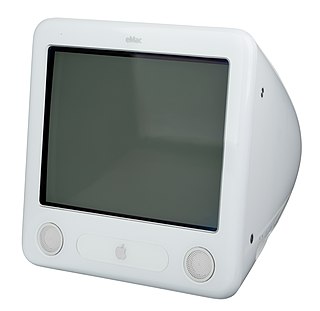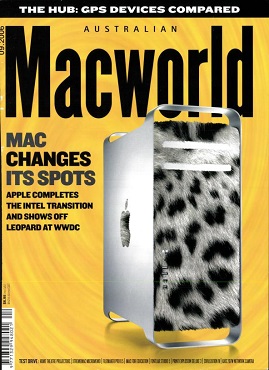Related Research Articles

Wolfram Mathematica is a software system with built-in libraries for several areas of technical computing that allow machine learning, statistics, symbolic computation, data manipulation, network analysis, time series analysis, NLP, optimization, plotting functions and various types of data, implementation of algorithms, creation of user interfaces, and interfacing with programs written in other programming languages. It was conceived by Stephen Wolfram, and is developed by Wolfram Research of Champaign, Illinois. The Wolfram Language is the programming language used in Mathematica. Mathematica 1.0 was released on June 23, 1988 in Champaign, Illinois and Santa Clara, California.

Microsoft PowerPoint is a presentation program, created by Robert Gaskins and Dennis Austin at a software company named Forethought, Inc. It was released on April 20, 1987, initially for Macintosh computers only. Microsoft acquired PowerPoint for about $14 million three months after it appeared. This was Microsoft's first significant acquisition, and Microsoft set up a new business unit for PowerPoint in Silicon Valley where Forethought had been located.

Adobe PageMaker is a discontinued desktop publishing computer program introduced in 1985 by the Aldus Corporation on the Apple Macintosh. The combination of the Macintosh's graphical user interface, PageMaker publishing software, and the Apple LaserWriter laser printer marked the beginning of the desktop publishing revolution. Ported to PCs running Windows 1.0 in 1987, PageMaker helped to popularize both the Macintosh platform and the Windows environment.
Adobe Authorware was an elearning authoring tool with its own interpreted, flowchart-based, graphical programming language. Authorware was used for creating interactive elearning programs that could integrate a range of multimedia content, particularly electronic educational technology applications. The flowchart model differentiated Authorware from other authoring tools, such as Adobe Flash and Adobe Director, which rely on a visual stage, time-line and script structure.

The eMac is a discontinued all-in-one Mac desktop computer that was produced and designed by Apple Computer. Released in 2002, it was originally aimed at the education market, but was later made available as a cheaper mass-market alternative to Apple's second-generation LCD iMac G4. The eMac was pulled from retail on October 12, 2005, and was again sold exclusively to educational institutions thereafter. It was discontinued by Apple on July 5, 2006, and replaced by a cheaper, low-end iMac G5 that, like the eMac, was exclusively sold to educational institutions.
Stunt Copter is a monochrome Macintosh action game written by Duane Blehm and published by his Kansas-based company, HomeTown Software, in 1986. Blehm's other games include Cairo Shootout, ZeroGravity, and PUZZ'L. He died unexpectedly in June 1988.

Adobe Shockwave is a discontinued multimedia platform for building interactive multimedia applications and video games. Developers originate content using Adobe Director and publish it on the Internet. Such content could be viewed in a web browser on any computer with the Shockwave Player plug-in installed. MacroMind originated the technology; Macromedia acquired MacroMind and developed it further, releasing Shockwave Player in 1995. Adobe then acquired Shockwave with Macromedia in 2005. Shockwave supports raster graphics, basic vector graphics, 3D graphics, audio, and an embedded scripting language called Lingo.

The iMac G3, which was originally released as the iMac, is a series of Macintosh personal computers Apple Computer sold from 1998 to 2003. The first iMac was Apple's first major product release under its CEO and co-founder Steve Jobs, who returned to the financially troubled company in 1996 after eleven years away. Jobs reorganized the company and simplified the product line; the iMac was designed as Apple's new consumer desktop product, an inexpensive, consumer-oriented computer that would easily connect to the Internet.

Sculpt 3D is a raytrace application released in 1987 for Amiga computers programmed by Eric Graham. Sculpt 3D was one of the first ray tracing applications released for the Amiga computers. It proved that raytracing could be done on home computers as well as on mainframes. Years later, the company Byte by Byte released a port for the Apple Macintosh.

Macworld Australia was the Australian version of the Macworld brand and magazine, carrying a combination of licensed content from the US and UK publications. It was the longest running Apple magazine outside the USA: running from 1985 to 2018.
Red Ryder is a communications and terminal emulation software program released for the Apple Macintosh in 1984. Initially distributed as a shareware, the application offered rich features and configuration settings. Red Ryder was discontinued in 1989 and replaced by White Knight.
MacroMind was an Apple Macintosh software company founded in Chicago in 1984 by Marc Canter, Jamie Fenton and Mark Stephen Pierce. The company's first product was SoundVision, a combined music and graphics editor. Before the release, the graphics editor was removed, and SoundVision became MusicWorks. Along with other early programs, MusicWorks was originally distributed by Hayden Software.
Mosaic was a Macintosh scorewriter application for producing music notation, developed by Mark of the Unicorn.
SoundEdit was the first popular GUI-based audio editor for digitized audio. It was one of the first significant audio applications for personal computers in general.
Meeting Maker is a cross-platform personal calendar and group scheduling software application from PeopleCube. First released in 1991 for Macintosh by ON Technology, support for other platforms followed in 1993 with Meeting Maker XP. Alongside Windows and Mac, native clients were released for OS/2 and Solaris, and later also for other platforms. Some support was also introduced for mobile platforms like Apple Newton, PalmPilot and Windows CE. Although powerful, its user interface - aiming at uniformity across multiple platforms — was criticized as weak and not supporting all features of target platforms.
Aldus PhotoStyler was a graphics software program developed by the Taiwanese company Ulead. Released in June 1991 as the first 24 bit image editor for Windows, it was bought the same year by the Aldus Prepress group. Its main competition was Adobe Photoshop. Version 2.0 introduced a new user interface and improved color calibration. PhotoStyler SE - lacking some features of the version 2.0 - was bundled with scanners like HP ScanJet. The product disappeared from the Adobe product line after Adobe acquired Aldus in 1994.
The Zinc Application Framework is an application framework, intended for the development of cross-platform software applications with graphical user interface (GUI), using a widget toolkit. Zinc targets both embedded and desktop platforms.
LINDO is a software package for linear programming, integer programming, nonlinear programming, stochastic programming and global optimization.

Dr. Halo is a raster graphics editor developed by Media Cybernetics and released for computers running MS-DOS. It was among the first graphics editors available for MS-DOS with its initial release in 1984. Media Cybernetics boasted about three million users of Dr. Halo between 1984 and 1993.
References
- ↑ Peltz, David L. (January 1989). "Swivel 3D 1.00". Macworld. IDG. pp. 156, 158. ISSN 0741-8647.
- ↑ "MacWorld News, ModelShop: 3-D in the Fast Lane". Macworld. IDG. November 1989. p. 119. ISSN 0741-8647.
- ↑ Worthington, Paul (August 6, 1990). "Paracomp Ships Three Mac Imaging Packages". InfoWorld. Vol. 12, no. 32. IDG. p. 5. ISSN 0199-6649.
- ↑ Rimey (1992). "Template Bsed Formula Editing in KAAVA". Design and Implementation of Symbolic Computation Systems: International Symposium, DISCO '92. p. 2.
- ↑ Seiter, Charles (January 1990). "Math Without Tears". Macworld. IDG. p. 161. ISSN 0741-8647.
- ↑ Seiter, Charles (July 1989). "Milo 1.0". Macworld. Vol. 6, no. 7. IDG. pp. 164, 166. ISSN 0741-8647.
- ↑ "MacBulletin, Mergers and Acquisitions". Macworld. IDG. October 1991. p. 19. ISSN 0741-8647.
- ↑ Borzo, Jeanette (March 9, 1992). "Merger builds multimedia powerhouse MacroMind, Authorware will pool software resources". InfoWorld. Vol. 14, no. 10. IDG. p. 8. ISSN 0199-6649.
- ↑ Napier, H. Albert; Rivers, Ollie N.; Wagner, Stuart (2006). Creating a Winning E-Business, Second Edition. Cengage Learning. p. 342. ISBN 9780619217426.